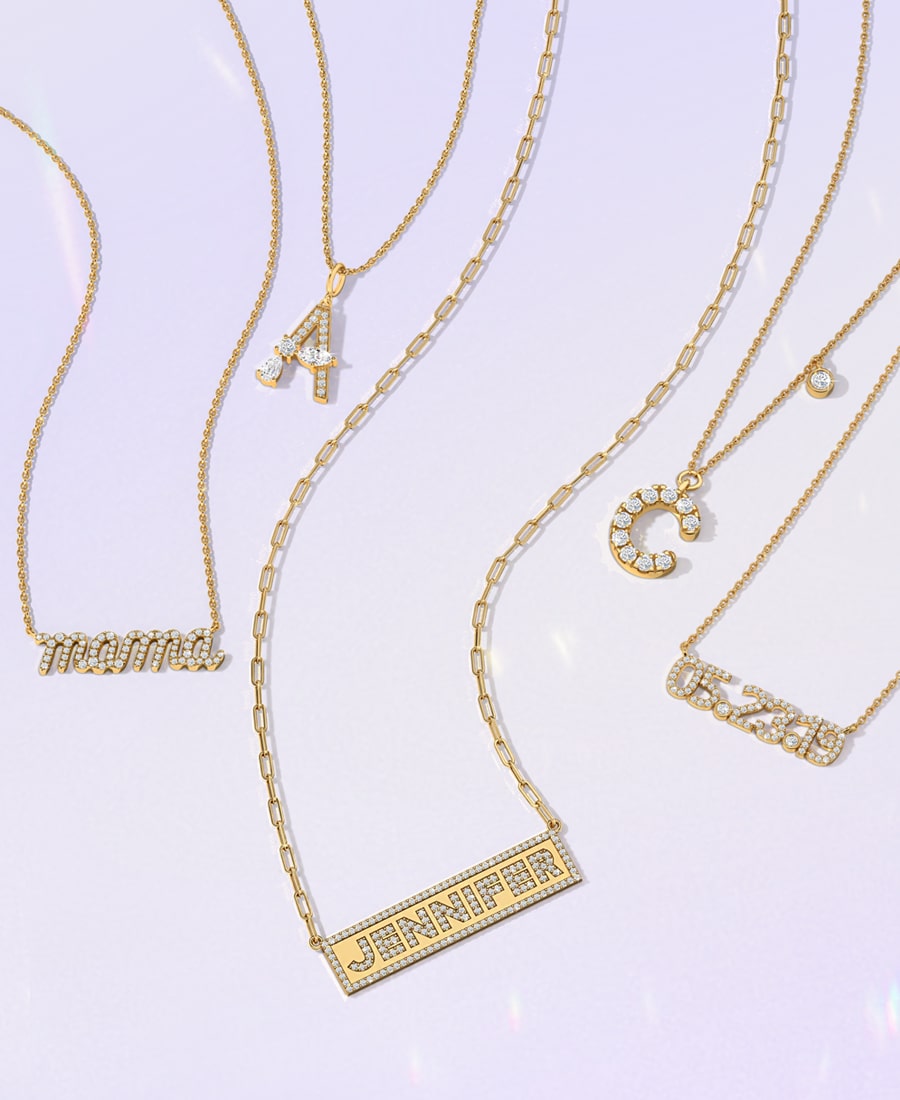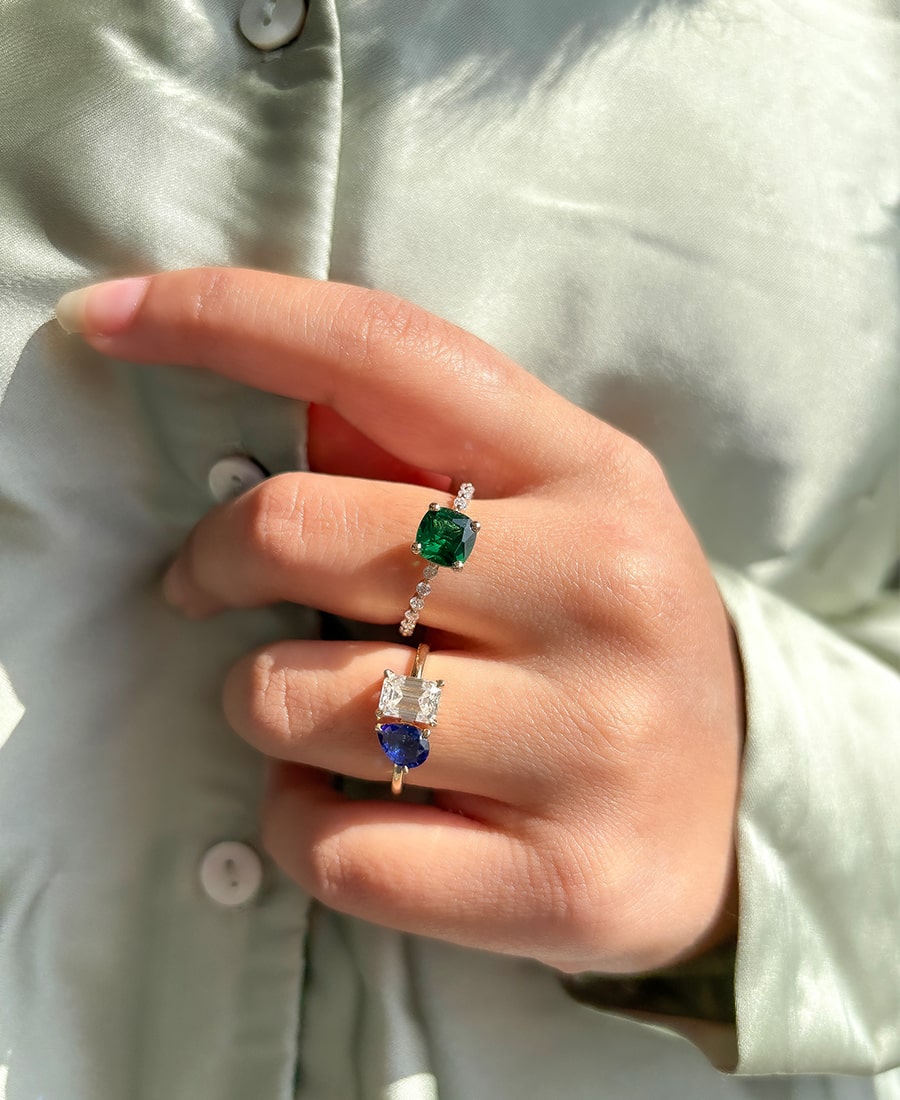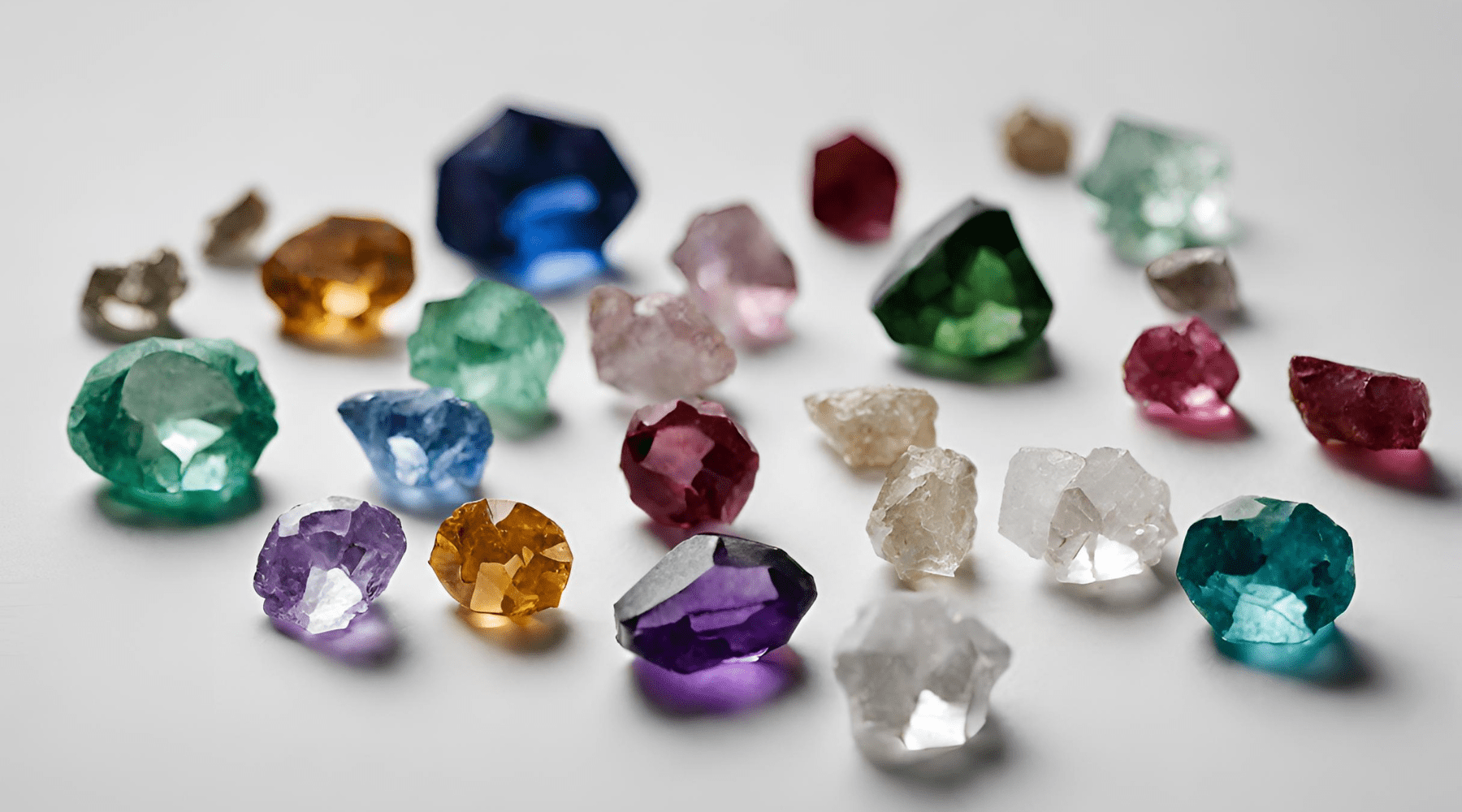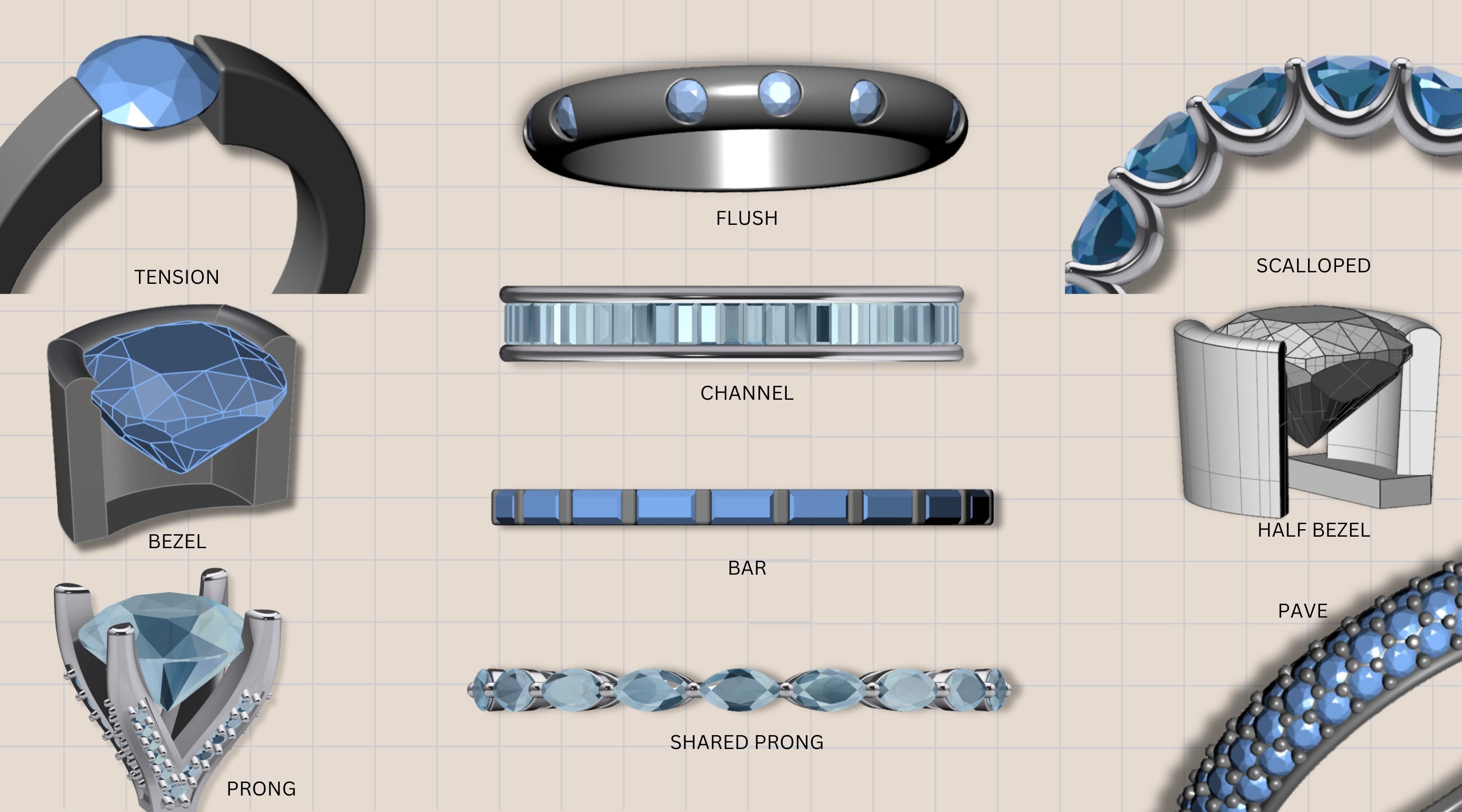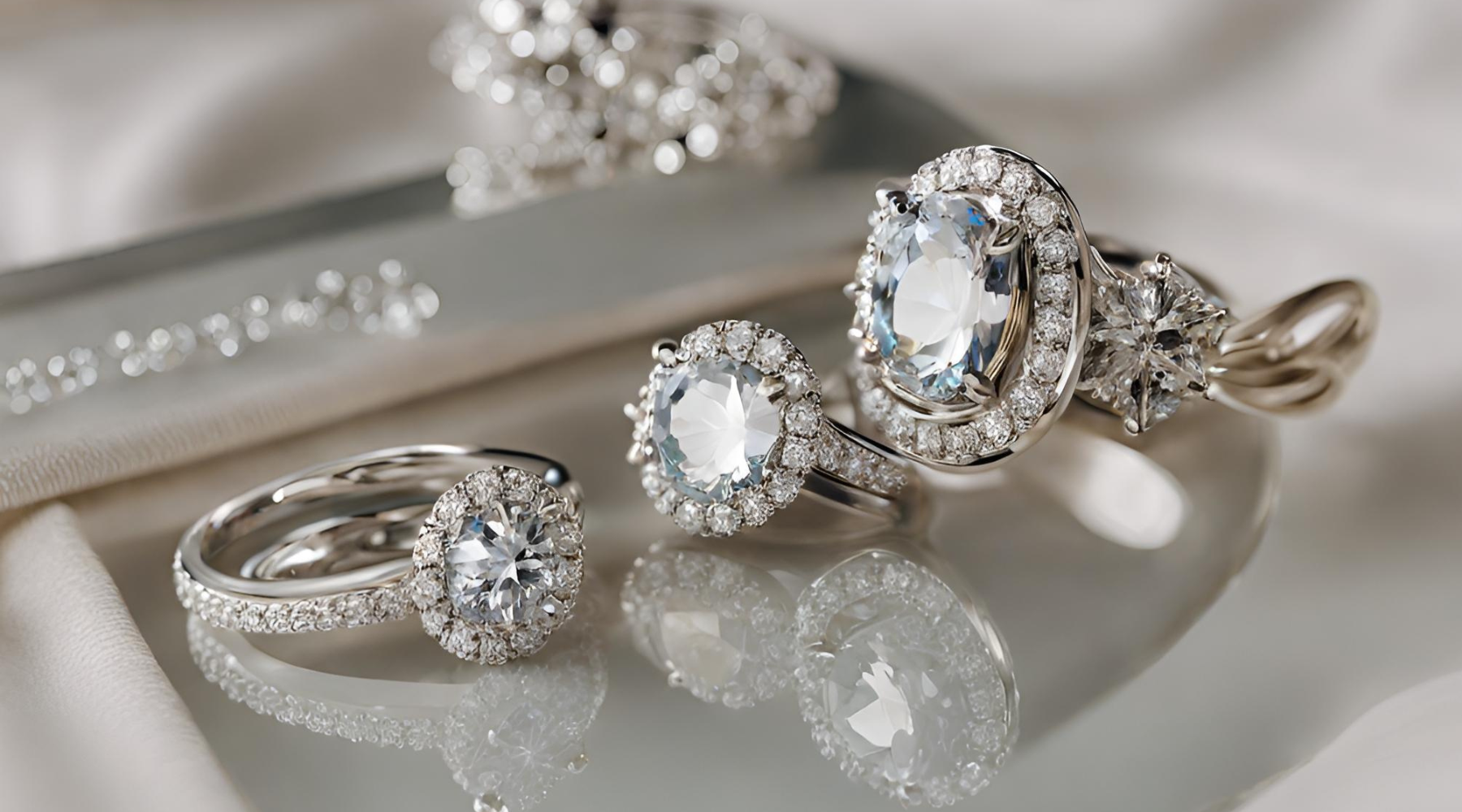
Types of Prong Settings for Engagement Rings
Prong settings are one of the most popular and versatile ways to mount a diamond or gemstone on an engagement ring. Prongs are small metal claws that hold the stone securely in place while allowing maximum light to enter and reflect from the facets. Prong settings can vary in number, shape, size, and style, creating different effects and aesthetics for the ring.
Key Takeaways
|
What are Prongs on an Engagement Ring?
Prongs, the metal claws securing the center stone in an engagement ring, come in gold, platinum, or silver for both functionality and aesthetic appeal.
- Versatile Attachments: Positioned on top, sides, or inside the band, they offer varied attachment styles.
- Impact on Durability and Comfort: Prongs influence durability and comfort in wearing the ring.
- Beauty and Maintenance: Crafted prongs enhance stone beauty and ease of cleaning.
Consider these factors when choosing prongs for a ring that combines aesthetics with comfort and durability.
What is a prong setting?
Selecting the perfect engagement ring setting? Consider the versatile prong setting, also known as a claw or Tiffany setting. Here's why:
- Versatile Showcase: Fits various stone shapes and sizes: round, oval, pear, marquise, princess, cushion, emerald, or heart.
- Diverse Styles: Caters to classic, modern, vintage, or unique preferences.
- Enhanced Beauty: Emphasizes stone brilliance with optimal light exposure.
- Illusion of Size: Elevates the stone, creating an illusion of greater size and prominence.
Types of Prongs
There are many factors that can affect the look and performance of a prong setting, such as the number, shape, height, and finish of the prongs. Here are some of the most common variations of prongs.
Number of Prongs
Striking the right balance between security and visibility is crucial when considering the number of prongs for your precious stone. The prongs, ranging from 2 to 10, depend on the stone's shape, size, and your preferences. The common options include 4 and 6 prongs, but you can also opt for 8 or 10 prongs.
Prong Numbers and Security:
- More prongs (8 or 10) distribute pressure evenly, enhancing security.
- However, excess prongs might obscure the stone and make the ring appear busy.
Prong Numbers and Visibility:
- Fewer prongs (2 or 4) expose more of the stone to light, maximizing sparkle.
- Yet, minimal prongs can provide less security and may leave gaps for potential damage.
Considering your stone's safety and the desire for a sparkling appearance, the choice between more or fewer prongs involves trade-offs. Let's explore the pros and cons in the table below.
Prong Shape
When it comes to choosing prongs for your ring, you have various options that can significantly influence its appearance and how light interacts with the stone. Let's dive into the characteristics of different prong shapes.
|
Round Prongs |
|
|
Pointed Prongs (Claw Prongs) |
|
|
Flat prongs (Tab Prongs) |
|
|
V-Shaped Prongs (Chevron Prongs) |
|
|
Other Prong-Shaped |
|
Consider the following pros and cons outlined in the table below as you decide on the perfect prong shape for your ring:
Choosing the right prong shape is a nuanced decision, and understanding the nuances can help you make an informed and stylish choice for your ring.
Prong Height
Prongs come in two varieties: high and low. High prongs provide extra protection for the stone but may give the ring a bulkier appearance. On the other hand, low prongs can create a more delicate look, though they might compromise security.
- High Prongs (Raised Prongs):
- Elevate the stone above the band, establishing a noticeable gap.
- Enable more light to enhance the stone's sparkle and brilliance.
- Create an illusion of increased size and prominence for the stone.
- Considered more protective but may result in a bulkier ring.
- Low Prongs (Flush Prongs):
- Set the stone close to the band, eliminating any gap.
- Contribute to a sleek and streamlined ring aesthetic.
- Reduce the overall bulk and weight of the ring.
- Enhance comfort and practicality by minimizing the risk of snagging or scratching.
Choosing between high and low prongs depends on your priorities: whether you prioritize protection and visual impact or prefer a sleek, comfortable design. The table below outlines the pros and cons of different prong heights.
Prong Finish
We can enhance your understanding of prongs and their impact on the overall appearance of a ring. Here's a breakdown of the various finishes.
|
Polished Prongs (Matte or Satin) |
-Common and Classic finish. - Smooth and shiny, reflecting light for added sparkle. - Offers a clean and sleek look. |
|
Brushed Prongs (Matte or Satin) |
- Textured and dull, creating a contrasting effect with the stone. - Provides a modern and sophisticated appearance. |
|
Milgrain Prongs (Beaded or Scalloped) |
- Decorated with tiny beads or ridges along the edges. - Adds extra details and charm to the ring. - Evokes a vintage and romantic look. |
Consider the pros and cons presented in the table below to make an informed decision about the finish that resonates with your style preferences. Choosing the right prong finish is a key element in personalizing your ring. We hope this guide helps you make an informed decision.
Types of Prong Settings
There are many types of prong settings, each with its own unique look and characteristics. Some of the most common ones are:
Solitaire Setting
A classic choice that's both simple and immensely popular. If you're considering a timeless and elegant look, a solitaire setting might just be your perfect match.
What is a Solitaire Setting?
- It's the simplest prong setting.
- Involves a single stone held by 4 or 6 prongs.
- Sits atop a plain band, keeping it sleek and straightforward.
Why Opt for a Solitaire Setting?
- Puts the spotlight on your stone's beauty and quality.
- Highlights the unique shape and cut of your chosen stone.
- Customizable with various bands like twisted, split, or pave options.
So, why choose a solitaire setting? It's not just about simplicity; it's about celebrating the essence of your stone. The clean lines and uncluttered design make it a timeless choice that never goes out of style.
Three-Stone Setting

Exploring the allure of three-stone settings! Also known as trilogy or past, present, and future settings, these feature three stones secured by prongs on a band. The center stone is usually larger, flanked by side stones of the same or different shapes.
Beyond aesthetics, these settings narrate a story—be it the journey of a couple or the harmony in a relationship. So, when you spot that three-stone piece, it's not just diamonds; it's a tale of love and connection.
Halo Setting

- Size and Sparkle Boost: The magic lies in how a halo setting amps up both the size and sparkle of that central stone you adore. It's like giving it a little extra shimmer and a touch of glam.
- Versatile Stone Choices: Those smaller stones surrounding the center? They can match or flaunt different colors, adding a personalized touch to your jewelry game.
- Shape and Cut Enhancement: Ever wondered how to highlight the unique shape and cut of your favorite stone? A halo setting does just that, putting the spotlight on the intricate details.
In a nutshell, a halo setting is your go-to for a dazzling upgrade. It's not just about the stones; it's about crafting a piece that speaks to your style. Ready to add that extra oomph to your jewelry collection? Explore the wonders of halo settings and watch your favorite stone steal the show!
Cluster Setting

When it comes to jewelry, one intriguing option you might want to consider is the cluster setting. Also known as a composite setting or illusion setting, this style involves several small stones securely held by prongs or beads on a band, forming a larger and distinctive shape or design.
- Versatility: Small stones in a cluster setting can vary in shapes, colors, and sizes, offering a versatile and personalized touch to your jewelry.
- Illusion of Size: One fascinating aspect of a cluster setting is its ability to create the illusion of a larger and more expensive stone. This can be an excellent choice if you're looking to make a statement without breaking the bank.
- Unique Aesthetic: The combination of different stones and settings results in a unique and eye-catching look. It's a great way to express your individual style and stand out.
- Customization Options: Personalize your cluster setting even further by choosing different types of bands, such as plain, pave, or channel bands. This allows you to tailor the overall design to match your preferences.
Cathedral Setting

- Versatility: Center stone, secured by prongs on a band, with stylish arches or bridges.
- Sturdy Support: Optimal support and protection for your center stone—practical and chic.
- Elegance Unleashed: Amp up the elegance with a majestic look and personalized band options.
Why consider it? It's the perfect combo of support, style, and personalization. Ready for the upgrade?
Care and Maintenance Tips For Prongs
Prong settings offer both beauty and versatility, yet they necessitate diligent care to maintain their condition. Here are some essential tips to ensure your prong setting remains in optimal shape:
- Regularly inspect your prongs for any indications of damage, such as bending, loosening, or breaking. Should you identify any issues, promptly seek the expertise of a professional jeweler for necessary repairs.
- Clean your prong setting with utmost care, using a soft brush, warm water, and mild soap. Steer clear of harsh chemicals, abrasives, or ultrasonic cleaners, as they can potentially harm the prongs or the stone.
- Store your prong setting separately from other jewelry, placing it in a soft pouch or a lined box. Shield your prong setting from extreme temperatures, humidity, or sunlight, as these factors may impact the color or durability of the metal or the stone.
- When engaging in activities that pose a risk of damage, such as gardening, sports, or cleaning, it is advisable to remove your prong setting. Consider wearing gloves or using tape to safeguard it from potential snagging or scratching.
By adhering to these simple yet crucial practices, you can prolong the life and luster of your prong setting, ensuring it remains a stunning accessory for years to come.
Conclusion
Prong settings are the most popular and versatile type of setting for engagement rings, as they can showcase any shape and size of stone, as well as enhance the beauty and sparkle of the stone. Prong settings can also be customized with different types of prongs and bands, depending on the style and preference of the wearer. However, prong settings also have some drawbacks, such as being more prone to snagging, scratching, and bending, and requiring more care and maintenance to keep the stone secure and clean. Therefore, it is important to consider the pros and cons of prong settings before choosing one for your engagement ring.
FAQs
1. How do I choose the right number of prongs for my engagement ring?
Prong choice depends on stone and style; 4 prongs suit most shapes, and 6 provide security but may cover more surface. Balancing aesthetics is key to personal preference.
2. How do I choose the right shape of prongs for my engagement ring?
Prong shape selection depends on the stone cut, ring aesthetics, and personal preference. Round prongs are classic, while pointed ones offer drama.
3. How do I choose the right height of prongs for my engagement ring?
Prong height choice hinges on stone size, ring balance, and personal preferences. Higher prongs offer more protection and sparkle but may be bulkier and prone to snagging.
4. How do I choose the right finish of prongs for my engagement ring?
Prong finish choice impacts stone sparkle, wear, and aesthetics. Opt for polished, brushed, or milgrain based on preferences and practicality for an informed decision.
5. How do I choose the right prong setting for my engagement ring?
Choosing the right prong setting involves aligning it with the diamond's characteristics, matching prong count for stability, and considering durability for daily wear. Share diamond details for personalized recommendations.
6. Can I customize my own prong settings?
Certainly. Yes, you can customize prong settings for your jewelry. Consider factors like prong type, metal, and design. Ensure the chosen customization aligns with your aesthetic preferences and practical requirements.
7. What is the difference between prong and bezel settings?
Prong settings secure gems with metal claws, boosting brilliance, while bezel settings offer durability and a modern look with a metal rim.

